World Travel Awards Winner
Endorsed by ASTA
In Alliance with Regenera
Rated Excellent by Tripadvisor
Machu Picchu is one of the Seven Wonders of the World and is a synonym of historical richness, ancient culture, and dazzling architecture. But, What does Machu Picchu mean? The name comes from the ancient Quechua language and means “Old Peak”. This Incan citadel is surrounded by terraces, temples, water channels, and unbeatable magic. It has been considered a cultural heritage of humanity by UNESCO in recognition of its religious and political importance during the age of its inhabitants, the Incas.
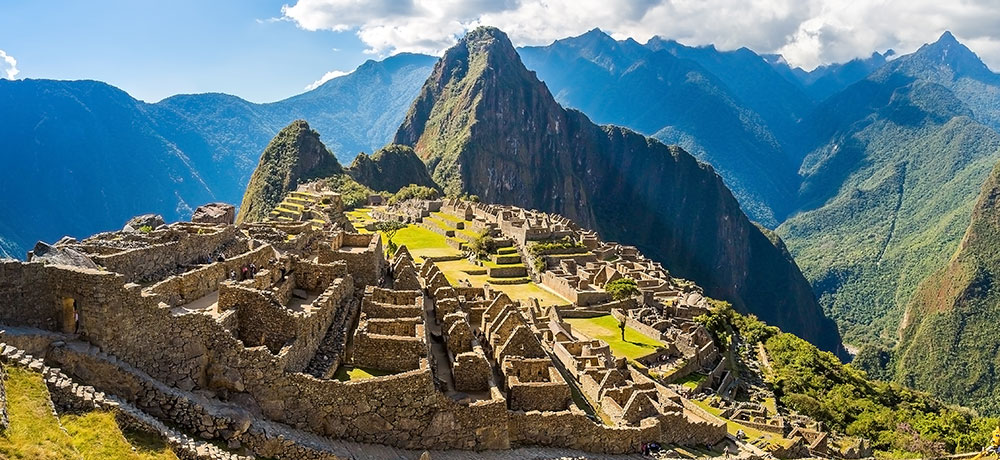
Certainly, there are a lot of things to do in Peru. So, Machu Travel Peru makes tailor-made tours to Machu Picchu which are designed according to your needs and desires. You will be dazzled by one of the most impressive architectural jewels of the world and marvel at its ancient history. It will be a special experience that will connect you with the ancestral Inca lifestyle. Also, every detail of your vacation in Peru will be perfectly organized by our expert team!
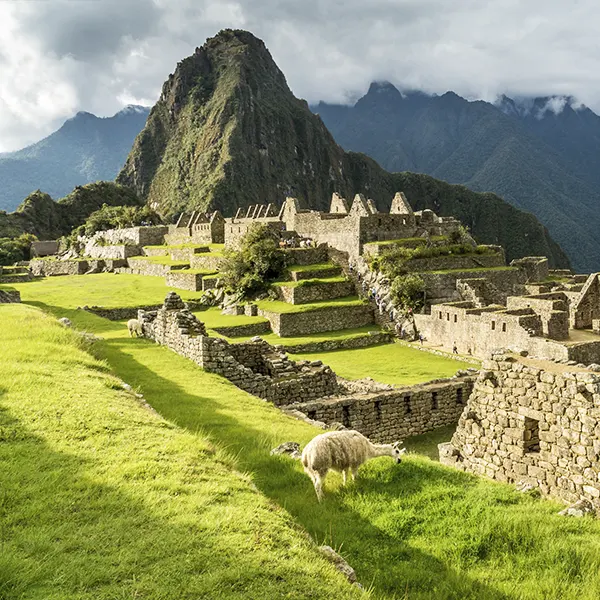
6 Days / 5 Nights
Lima, Cusco, Sacred Valley, Machu Picchu
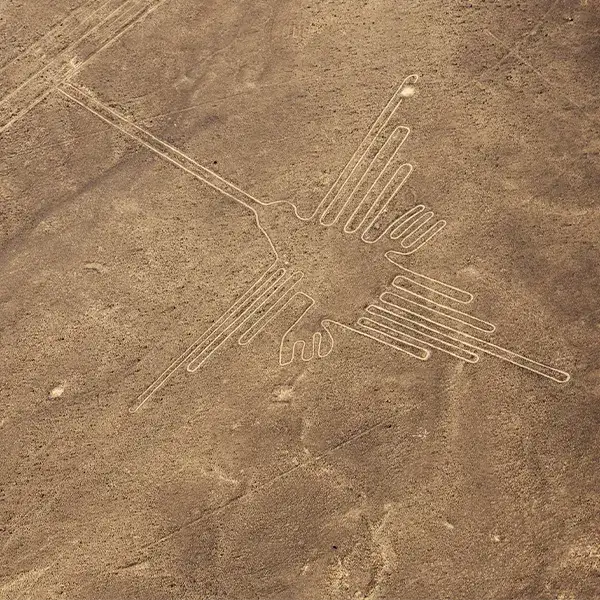
8 Days / 7 Nights
Lima, Ica, Paracas, Nazca, Cusco, Sacred Valley, Machu Picchu
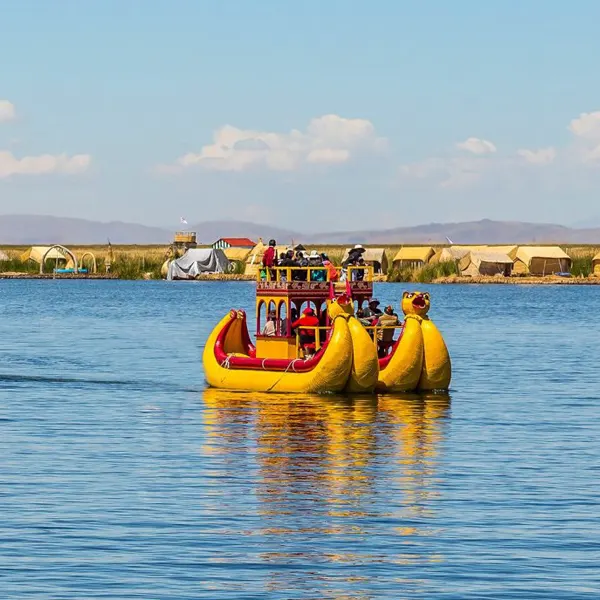
8 Days / 7 Nights
Lima, Cusco, Sacred Valley, Machu Picchu, Puno, Lake Titicaca
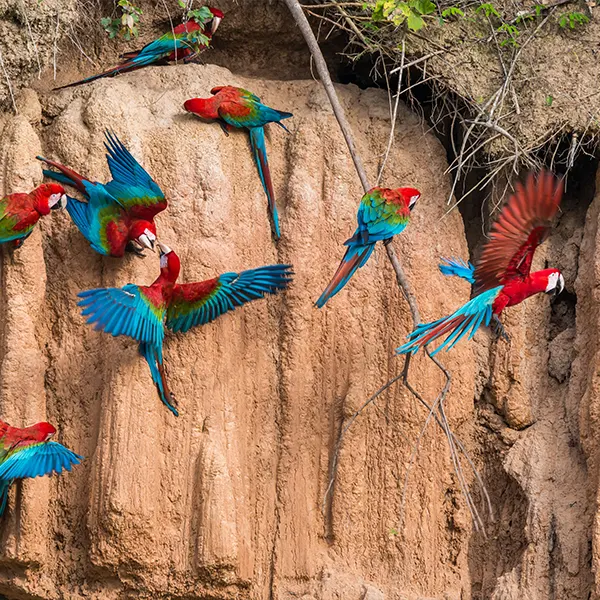
9 Days / 8 Nights
Lima, Cusco, Sacred Valley, Machu Picchu, Puerto Maldonado, Tambopata
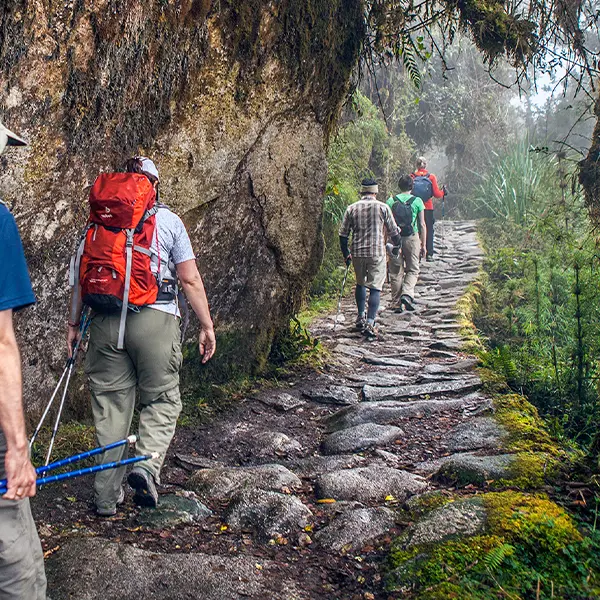
9 Days / 8 Nights
Lima, Cusco, Sacred Valley, Inca Trail, Machu Picchu
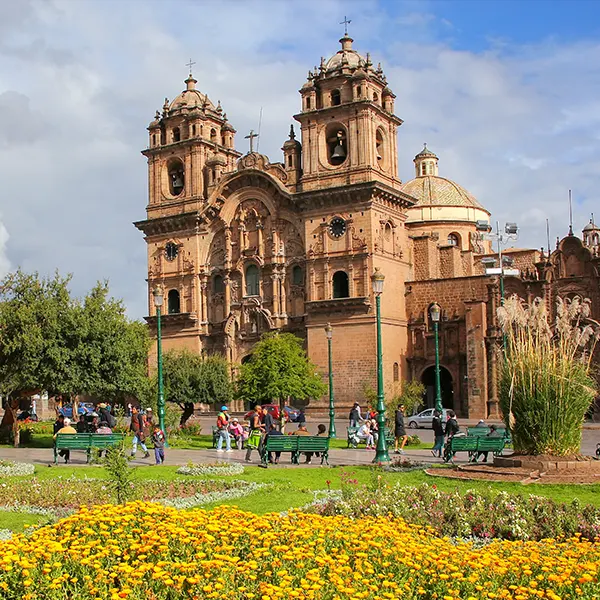
11 days / 10 nights
Lima, Puerto Maldonado, Cusco, Sacred Valley, Machu Picchu, Puno, Lake Titicaca
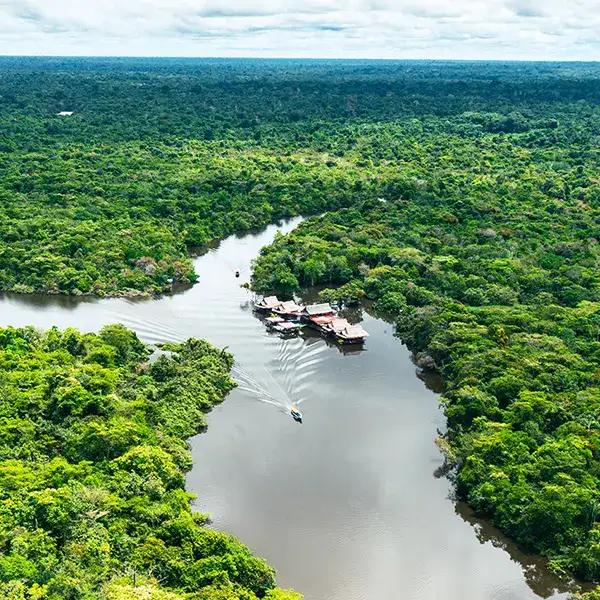
11 days / 10 nights
Lima, Cusco, Sacred Valley, Machu Picchu, Iquitos
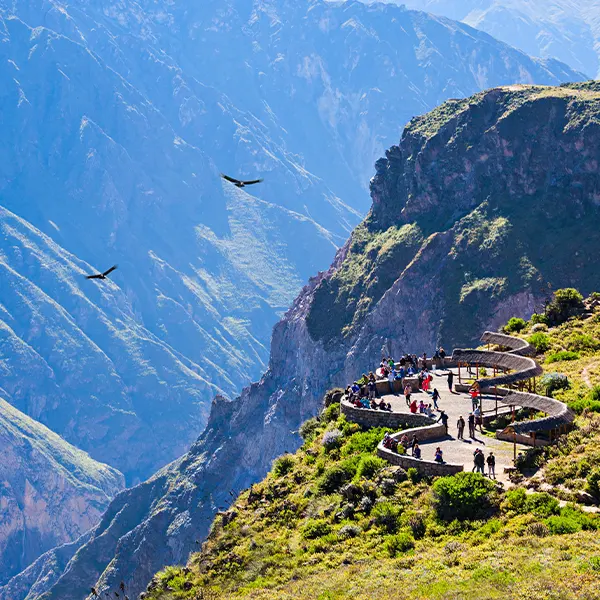
11 Days / 10 Nights
Lima, Arequipa, Colca Canyon, Puno, Lake Titicaca, Cusco, Sacred Valley, Machu Picchu
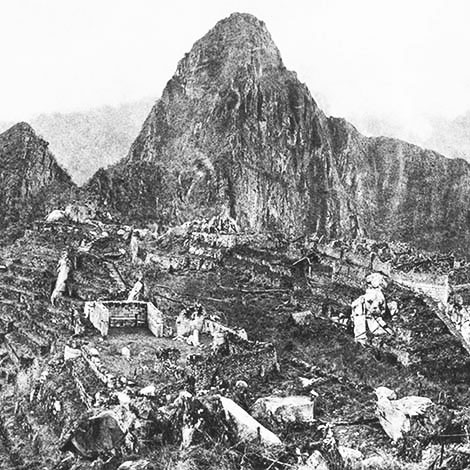
Never discovered by the Spanish conquerors, for many centuries the “Lost City of the Incas” lay forgotten, except by local Indians and settlers, until it was found on July 24, 1911, by the US explorer Hiram Bingham. It was a fantastic find, not least because the site was still relatively intact, without the usual ravages of either Spanish conquistadores or tomb robbers. Accompanied only by two locals, Bingham left his base camp around 10 am and crossed a bridge so dodgy that he crawled over it on his hands and knees before climbing a precipitous slope until they reached the ridge at around midday. After resting at a small hut, he received hospitality from a local peasant who described an extensive system of terraces where they had found good fertile soil for their crops. Bingham was led to the site by an 11-year-old local boy, Pablito Alvarez, but it didn't take him long to see that he had come across some important ancient Inca terraces over a hundred of which had recently been cleared of forest for subsistence crops. After a little more exploration Bingham found the fine white stonework and began to realize that this might be the place he was looking for.
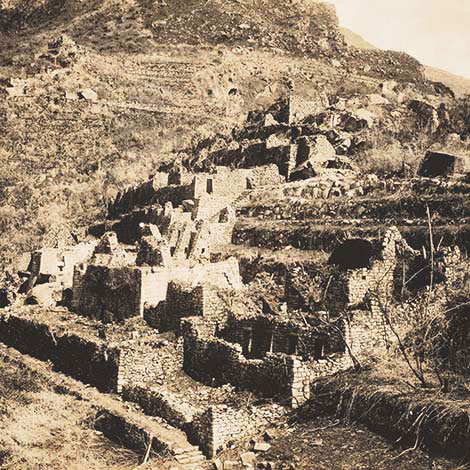
Bingham first theorized that Machu Picchu was the lost city of Vilcabamba, the last refuge of the Incas from the Spanish conquistadors. Not until another American expedition surveyed the ruins in the 1940s did serious doubts begin to arise over this assertion, and more recently the site of the Incas' final stronghold has been shown to be Espiritu Pampa in the Amazon jungle.
Meanwhile, it was speculated that “Lost City of the Incas” was perhaps the best preserved of a series of agricultural centers that served Cusco in its prime. The city was conceived and built in the mid-fifteenth century by Emperor Pachacuti, the first to expand the empire beyond the Sacred Valley towards the forested gold-lands. With crop fertility, mountains, and nature as sacred to the Incas, an agricultural center as important as the Inca citadel would easily have merited the site with fine stonework and temple precincts. It was clearly also a ritual center, given the layout and quantity of temples; but for the Incas, it was usual to not separate things we consider economic tasks from more conventional religious activities. So, Machu Picchu represents to many archeologists the most classical and best-preserved remains in existence of a citadel used by the Incas as both a religious temple site and an agricultural (perhaps experimental) center.
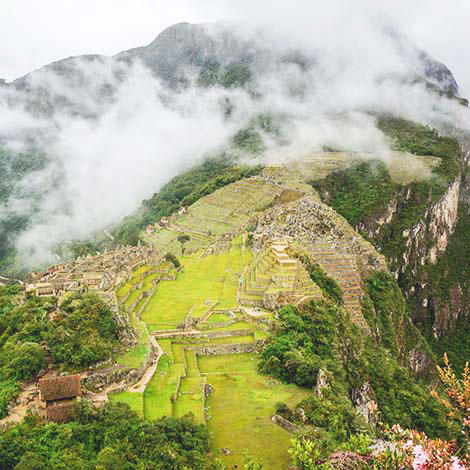 Machu Picchu is located in the high Andes mountain range, right in the middle of the Sacred Valley. The Valley at the same time borders the nearby Amazon Rainforest. If you travel about 80 kilometers east of Cusco, you will arrive at “Lost City of the Incas”, built on the side of a mountain. The Machu Picchu mapis surrounded by high peaks with exuberant vegetation and overlooks the Urubamba River, which flows through Aguas Calientes, the city below. The Inca citadel is crossed by 2 mountain ranges. The Urubamba mountain range and the Vilcanota mountain range are the ones that cross the citadel. The main mountains that surround the citadel are the mountain of Machu Picchu and the mountain of Huayna Picchu. Both mountains are part of the Vilcabamba batholith. The citadel is located just halfway between the two mountain tops.
Machu Picchu is located in the high Andes mountain range, right in the middle of the Sacred Valley. The Valley at the same time borders the nearby Amazon Rainforest. If you travel about 80 kilometers east of Cusco, you will arrive at “Lost City of the Incas”, built on the side of a mountain. The Machu Picchu mapis surrounded by high peaks with exuberant vegetation and overlooks the Urubamba River, which flows through Aguas Calientes, the city below. The Inca citadel is crossed by 2 mountain ranges. The Urubamba mountain range and the Vilcanota mountain range are the ones that cross the citadel. The main mountains that surround the citadel are the mountain of Machu Picchu and the mountain of Huayna Picchu. Both mountains are part of the Vilcabamba batholith. The citadel is located just halfway between the two mountain tops.Machu Picchu is located in the Andes Mountain range at 7,970 ft (2430 m) above sea level. While the Inca citadel is located about 450 meters above the Sacred Valley. Not only is Inca citadel available for hikes, but also try Huayna Picchu (8,920 ft / 2,720 m) and Machu Picchu Mountain (10,100 ft / 3,080 m).
Located on the cusp of the Andes Mountains and upper Amazon basin, the mild subtropical climate of Machu Picchu is more humid than Cusco and the Sacred Valley. The temperature of the Inca citadel is warm and humid during the day, while at night it is much cooler. The temperature can range between 12 and 24 degrees Celsius. And no matter what time you travel, rain can appear without warning and water never freezes. See Seasonal Info for more details.
Altitude sickness is a common health problem for people who visit the Inca citadel. Everyone reacts differently, but severe reactions to high elevations are rare and hard to predict. Many travelers only experience minor symptoms, such as shortness of breath, headache, loss of appetite, or nausea, as a result of the altitude. Cusco and the Sacred Valley are at higher elevations than Machu Picchu.
The Machu Picchu weather can change abruptly. In the morning the temperature can be cool and also at night, so bring a good jacket. During the middle of the day, it can be warm so dress in layers.
NB: In the highlands of Peru, there is a rainy season and dry season. But you should expect rain at any time of the year, so always come prepared.
Are you asking about how to get to Machu Picchu? The spectacular Andean mountain scenery is undoubtedly picturesque and extremely varied. It encompasses glaciers, lakes, and forests. There are off-the-beaten-path routes to reach the Inca citadel that are considered more than exceptional and unique ones. They won't cease to surprise you. Keep in mind that for whatever way you choose to go to the citadel you will need to reserve your entrance tickets.
Arrive in style on a wonderful train journey. You can choose from train to Machu Picchu budget options to more luxurious and exclusive ones. The easiest and most frequent way to get is to take the train from Cusco (Poroy train station) to Aguas Calientes or Ollantaytambo to Aguas Calientes. There are two main companies that count on the highest standards of comfort, convenience, and safety. If you are traveling independently, it is advisable to book train tickets to Machu Picchu in advance. The total travel time can be between three and a half hours to four hours of travel.
When arriving at Aguas Calientes, shuttle buses are available to ascend the mountain and transport you to the Inca citadel. They operate throughout the day and leave every 15 minutes from Aguas Calientes to Machu Picchu and vice versa. The trip is quite short and it can last between 35 to 40 minutes depending on the pace. The bus station is just 5 minutes from the train station.
If we pay attention to an Inca Trail map, we can realize that this one is a specific section of the hundreds of routes built by the Inca Empire. One of the most rewarding and challenging ways to get to "Lost City of the Incas" is by following one of the paths of the Inca Trail. It's a spectacular network of tracks that wind across snow-capped Andean mountains, rivers, and breathtaking landscapes. Thanks to its natural and cultural treasures, it has become an attraction that draws thousands of enthusiastic travelers every year. Along your way, you can visit the Inca ruins and much more. Numerous tour operators offer the possibility of walking the Inca Trail to Machu Picchu. Please note that depending on your operator, you will have alternatives of different durations. The classic Inca Trail tour lasts 4 days and 3 nights. Although there are other variants of fewer days.
Those travelers who are interested in archeology should consider the Choquequirao trek. This trek is a four-day to nine-day hike through a wide variety of flora and fauna, spectacular and stunning Andean scenery, and an ancient trail leading to the well-preserved Inca ruins of Choquequirao. This challenging hike is definitely a once-in-a-lifetime adventure.
If you are looking to enjoy a less crowded and more private experience, the Salkantay Trek is one of the best options. This is usually the second most popular way to hike to Machu Picchu. The Salkantay trek owes its name to one of the highest Andean peaks in Peru: The Salkantay Mountain. The Salkantay is one of the most imposing peaks in the Peruvian Andes and has a height of 6,271 meters above sea level. This incredible five-day trek is one of the best trekking alternatives to Inca citadel, but more difficult. You will pass through imposing Andean peaks, cloud forests, and dazzling jungle. Without a doubt, it's a must!
If we want to answer correctly the question of what is Machu Picchu? Is an ancient Inca citadel located at 2,430m. above the sea level, in South America in the Peruvian Andes, and was built in the 15th century, used as a residential neighborhood, and ceremonial center, and was abandoned only one hundred years later. In 1986, Machu Picchu was declared a World Heritage site by UNESCO. Besides, in 2007, it was chosen as one of the Seven Wonders of the World since it's one of the most famous and spectacular sets of ruins in the whole world.
"Lost City of the Incas" sits above the Sacred Valley of the Incas, in the Cusco department. At 2,430 m., the Inca citadel is overlooking the Urubamba River and is surrounded by majestic forest-covered mountains. The access point is the town of Aguas Calientes.
Most travelers fly into the city of Cusco and from there there are a couple of ways to get to the Inca citadel such as taking the train or hiking, or taking a bus. If you decide to hike, here are several interesting trails you can take but the most popular and famous one is the Inca Trail. There are many alternative routes to Machu Picchu, you can choose the most suitable for you.
In order to take the train, you must go to the Ollantaytambo Train Station which is around 1.5 hrs. away from Cusco by bus. From there, you have to take a train trip to Aguas Calientes that takes around 2 hrs. Once you arrived at Aguas Calientes, you have two options: take a bus or walk up to the entrance to "Lost City of the Incas".
Regarding buses, you must take a bus from Cusco to the Hydroelectric train Station, the trip pass by two quaint towns like Santa Maria, and Santa Teresa, and takes around 4 hours. Once at the Hydroelectric station, you have two alternatives: take a train led to Aguas Calientes, the trip lasts 01 hours. Or, walk to Aguas Calientes for around 03 hours, following the railways.
The truth is that the Inca citadel is available throughout the year. The best time to visit Machu Picchu will depend a lot on how you want to enjoy your adventure. In general, you can choose to travel in the high season or the low season. Each of these has its own advantages and disadvantages. Although the truth is that an experience like the Inca citadel can be appreciated at any time of the year.
Absolutely yes.There are many day trips designed to explore Machu Picchu, if you are in Cusco, you can start your journey very early in the morning, take a 1.5-hour bus ride to Ollantaytambo, and then a 2.5-hour train ride to Aguas Calientes. Once you arrive there, you can take a 45-min bus ride to the Inca citadel. You will have a couple of hours to explore the dazzling "Lost City of the Incas" and then, return to Cusco the same day in the same form. Bus to go down to Aguas Calientes, after a train to Ollantaytambo, and from it, a bus to Cusco.
Keep in mind that you must book your Machu Picchu tickets in advance.
Of course, visiting the Inca citadel citadel for just a couple of hours is not ideal. Also, this kind of full-day trip doesn't offer much time to visit and enjoy the citadel, and the Sacred Valley of the Incas.
Machu Picchu is at a height of 2,430 m. above the sea level - sitting at 1000 m. lower than Cusco- which is below the minimum height at which altitude sickness can hit you badly. It mostly affects people from low-altitude locations. This is an example of how wrong we can be about how high is Machu Picchu is and that it is also lower than Cusco situated over 3500 m.a.s.l. Be aware that a visit to the Inca citadel involves walking up and down many steep stairs, terraces, and ramps at different altitudes.
Technically, yes. Altitude sickness can affect anybody who goes from low altitudes to high altitudes without giving the body time to adjust to the changes in oxygen level and air pressure.
Regardless of gender, age, or fitness level, most travelers can feel the effects of high altitude at over 2,000 m. The symptoms include dizziness, headaches, tiredness, and vomiting. Thus, Machu Travel Peru recommends taking your time to explore the Inca citadel, drinking plenty of water o coca leaf tea for altitude sickness. Even spending a couple of days in the city of Cusco to let your body acclimatize to the high Andean altitude.
Your backpack will depend on the weather and the season, the Inca citadel is located in a tropical cloud forest on the Cusco jungle eyebrow. Therefore, the weather there can be warm and humid, totally different in front of Cusco (the city where depart the majority of transportation to the "Lost City of the Incas") which presents cold and dry weather due to the altitude. Therefore, preparing a backpack can be varied. Here, you have some tips to pack the more essential things for your Machu Picchu trip.
Backpack: A backpack of 25 liters will be enough for a full day trips, even for a trip of 2D/1N. Remember that you must take it during your tour for two hours or more (up to three) through the citadel of the Inca citadel. That's why the lighter the backpack, the better. Of course, if you plan to do the Inca Trail or spend more days in Aguas Calientes, you can carry a duffle bag or a carry-on of a maximum of 10 kg (22 lb) with dimensions of 62 inches or 158 cm (height + length + width) onboard train. This suitcase must remain in the hotel storage while you carry a small backpack during your tour. You cannot take your complete hand luggage to Machu Picchu.
Clothes: As usual, the clothes to wear in tropical and warm weather will be light. However, the moments when you leave Cusco heading to the Inca citadel (Usually early mornings) and during the returns (late at night), you can feel extreme cold. Therefore, packing the necessary things will be crucial.
Food: Eat or consume any type of food or snack inside the Inca citadel is forbidden. But, you can carry them in your backpack and eat them before or after the tour (outside of the inca complex).
Some advice: There are some archaeological park regulations that any visitor has to comply with during the visits. The most important are:
Basics: The following list is the most essential things that you have to bring with you on your tour.
Huayna Picchu or Wayna Picchu, also known as the "stairs of death", is the large mountain that sits directly behind Machu Picchu.
For many travelers, Huayna Picchu mountain is one of the most dazzling places in the Inca sanctuary. The views from the top of this mountain are, without a doubt, mind-blowing. It's well worth the climbing effort. However, it's not recommended for people who suffer vertigo or cannot overcome their fear of heights.
Imagine waking up one morning in an exclusive hotel in Aguas Calientes, taking a light but protein breakfast, and beginning your tour. While you are transported from the town to the Incas citadel in a bus (45 min), and you are guided through all the attractive (03 hours), the digestion is in full process and sometimes your body may require you to go to the bathroom. Having considered that there are no bathrooms inside the Inca citadel, your only option is to go out from the citadel to use the bathrooms (located on the right side of the Archaeological park entrance) Once your needs are met, you decide to re-enter to Machu Picchu. But, What? you can't re-enter to Machu Picchu. Your entrance is valid only one time, and this is useless if you want to re-enter to archaeological complex.
In other words, answering the question, Can you pee in Machu Picchu? the answer is no. You will have to use the bathrooms of your hotel or pay for some (S/ 2 per cabin) located over the side of the Archaeological park entrance before entering the Inca citadel. A cautious man is worth two.
Machu Picchu, as a new world’s wonder and cultural heritage of Humanity by UNESCO, is an attraction suitable for everyone. Therefore, the administration of the Inca citadel has a special protocol to attend to those visitors with motor disabilities.
First, we recommend that these persons come to accompanied by a relative, friend, or someone who helps them to push the wheelchair or serves them as a support for walking.
Second, once the disabled person has purchased his tickets to visit Machu Picchu and is at the citadel entry control post, he must prove that they suffer from motor disabilities (a certificate, CONADIS card, medical certificate) to obtain assistance like an extra wheelchair (If that's the case), or a personal assistant to help to push the wheelchair (This will depend of availability of personnel and traffic of visitant in the day).
Third, the park rangers will be informed about the particular condition of a visitor and they will assist them at every point where they are guarding.
Fourth, the Inca citadel was built following the Incas architectonical style, with well-carved stones, narrow passages, sloping stairs, and walkways to the edge of the abyss. Therefore, the wheelchair will have limited access to some zones of the attraction. Ask the park rangers where is the most adequate route for visitors with motor disables, they will be glad to indicate to you the shortest and most accessible route for your tour. In this case, circuit 3 (Yellow).
Fifth. Of course, our recommendation, besides being accompanied by a relative or friend, is to hire the service of a tour guide: touring an archaeological park with so much history without an expert or someone who tells you about the most important facts of the marvel, would be boring. Or, if you prefer, you can take a Machu Picchu virtual tour, happily, nowadays technology is at the service of everyone, and there are interactive virtual maps of the citadel, in which you can enjoy every zone, see the beautiful landscapes, and knowing its history.
The tours will depend greatly on the time spent there and the entrance shifts. In general, these are early morning tours, which means that it has to depart very early from Cusco (around 4 to 5 am), taking a train to Aguas Calientes town (4 hours of trip) or taking a bus to Ollantaytambo train station (02 hours trip), and from there, take a train to Aguas Calientes (02 hours more).
Aguas Calientes is the support town of Machu Picchu. Once arrived there, you will have to take a bus to get to the citadel (45 min). The ticket will entitle you to enter at a certain hour to the attraction and spend there a certain time (03 hours as a máximum). After that, you will have to take a bus to return to Aguas Calientes (45 min more).
In Aguas Calientes, you will have the time to take lunch, use the bathrooms, or go to the hot springs (The attraction that gives the town its name). At a certain hour, you will have to take a train to return to Ollantaytambo train station in the Sacred Valley, (if your hotel is located there) or directly to Cusco.
For those visitors who want to climb up to Waynapicchu (The mountain behind the citadel) or the Machu Picchu mountain (another mountain located in contraposition of Waynapicchu and receives the same name as the citadel), they will have to spend a night in Aguas Calientes, so that the next morning, very early, begin to climb up these mountains and get spectaculars views of the archaeological complex.
For those who want to spend 2 or 4 days on the Inca Trail and do the tour through Machu Picchu on the last day, they have the possibility of spending a night more in Aguas Calientes or taking a bus to return to Sacred Valley or Cusco. As we mentioned, all will depend on the time that you want to spend in the Inca citadel and the shift of visit.
The entrances to Machu Picchu largely depend on the time of the visit and the place (circuit) of the visit. Therefore, the Machu Picchu park administration offers 4 different tickets to enjoy the many varieties of the archaeological complex. Also, the Machu Picchu tickets have different costs, divided by age. Adult, from 18 years old to more. Students, from 18 years old to 25 (Previously showing an original student card at moment to buy the ticket). Children, from 03 to 18 years old.
Llaqta of Machu Picchu (Circuit 1, 2, 3 or 4): Llaqta is a Quechua word that means town or citadel. This is the most common ticket to visit the citadel, and It allows you to choose one of the 4 circuits to visit the Inca citadel. Each circuit can be toured in only one sense (from the beginning to the finish), without the possibility of going back or changing the circuit once begin the route. Also, the ticket comes with a certain hour (previously selected by the visitor, at the moment of the ticket purchase), which indicates the hour of the entrance to the citadel. For example, if your ticket indicates 08:00 am as your entrance hour, this means that you have a range of time from 08 to 09 am to the entrance. From your entry time, the maximum of 03 hours will be computed to remain in the citadel.
Circuit 4 + Waynapicchu Mountain: This means that you can climb up the Waynapicchu mountain (you`ll have a range of time of 3 hours for this) and after, the possibility of visiting the citadel by 2 hours more, following circuit 4. In the same way, your ticket will indicate a certain hour, previously chosen by you, to enter the mountain Waynapicchu. If this indicates 10 am, you`ll have from 10 to 11 am to enter the mountain. Among Machu Picchu tickets, usually, this is the most demanded, for this reason, buying it, at least, 6 months in advance, will be the most recommendable.
Machu Picchu mountain + circuit 3: This ticket allows you to climb up Machu Picchu Mountain (located at the south of the citadel, as opposed to Waynapicchu). Similar to its predecessors, this ticket indicates a certain hour to begin the climb to the mountain (this attraction receives the same name as the citadel), and after, visiting the citadel by circuit number 3. The complete tour last 6 hours, at least, and many tours to Machu Picchu include it in their itineraries.
Circuit 4 + Huchuy Picchu mountain: This is the newest ticket option to visit Machu Picchu and climb the mountain Huchuy Picchu. This mountain is located at the north of the citadel and its visit last 01 hour at maximum. The ticket offers the possibility of climbing this mountain and visiting the citadel by circuit number 4. A visitor can remain in the archaeological complex for around 04 hours with this ticket. In the same way, you have to choose an hour to the entrance to Huchuy Picchu at the moment of buying the ticket.
Usually, the archaeological complex is open from 06 am to 05:30 pm, all days of the week, even on holidays. Of course, this range of time is divided by the hours of entrance that each tickets types contain. This without considering the stay of up to 3 hours in the complex.
Llaqta of Machu Picchu (Circuit 1, 2, 3, or 4):
| Llaqta Machu Picchu Ticket | Range of time to entrance |
| Llaqta Machu Picchu Entrance | From 06:00 - 07:00 am |
| From 07:00 - 08:00 am | |
| From 08:00 - 09:00 am | |
| From 09:00 - 10:00 am | |
| From 10:00 - 11:00 am | |
| From 11:00 - 12:00 pm | |
| From 12:00 - 13:00 pm | |
| From 13:00 - 14:00 pm | |
| From 14:00 - 15:00 pm |
Circuit 4 + Waynapicchu Mountain:
| Huayna Picchu + Circuit 4 ticket | Range of time to entrance |
| Huayna Picchu + Circuit 4 Entrance | From 06:00 - 07:00 am |
| From 08:00 - 09:00 am | |
| From 10:00 - 11:00 am | |
| From 12:00 - 13:00 pm |
Machu Picchu mountain + circuit 3:
| Machu Picchu mountain + Circuit 3 ticket | Range of time to entrance |
| Mountain + Circuit 3 Entrance | From 06:00 - 07:00 am |
| From 08:00 - 09:00 am |
Circuit 4 + Huchuy Picchu mountain:
| Huchuy Picchu + Circuit 3 ticket | Range of time to entrance |
| Huchuy Picchu + Circuit 3 Entrance | 06:00 - 07:00 am |
| 07:00 - 08:00 am | |
| 08:00 - 09:00 am | |
| 09:00 - 10:00 am | |
| 11:00 - 12:00 pm | |
| 12:00 - 13:00 pm | |
| 13:00 - 14:00 pm | |
| 14:00 - 15:00 pm |
The cost of a Machu Picchu trip includes different factors, besides the entrance ticket to the world wonder. The transportation cost from Cusco or Sacred Valley hotels to the train station, the train ticket to Aguas Calientes, the buses CONSETTUR (to get to the Inca citadel from the Aguas Calientes town), the service of a tour guide, it is due to a Peruvian government regulation in which indicate that any tourist can`t visit the citadel alone, they have to be accompanied by an authorized tour guide in all moment. And, naturally, the cost of entrance to the archaeological complex.
As you can see, the costs of tours to Machu Picchu have many variants. But, rest assure, we will treat each of them:
Car transportation: Whether you're staying in Cusco or the Sacred Valley of the Incas, this will be your first investment. Unfortunately, most of the train stations are located outside Cusco or in the north extreme of Sacred Valley, therefore, the visitor will need car transportation to get to these. If your train departs from San Pedro train station (the only one located in Cusco) you will need only a taxi (3$ one way). But If your train departs from Poroy, located 14 km outside Cusco, you will need private transportation to get there from Cusco (10 $ one way). Now, if your train departs from Ollantaytambo train station, located to 62 km from Cusco and 20km from Sacred Valley, you can pay 8 $ one way from Sacred Valley and 16 $ one way from Cusco.
Train Service: As you can see, the trains usually depart from Poroy or Ollantaytambo train station, only a pair of these depart from San Pedro train station, the only one located in the same Cusco city. Therefore, the cost of the train will depend of the distance to run from its starting point to the Aguas Calientes town round trip. The greater the distance, the higher the cost. Shorter distance, lower cost.
| Train service | From Poroy | From Ollantaytambo |
| Hiram Bingham | 950.00 $ | 900.00 $ |
| Vistadome | 190.00 $ | 170.00 $ |
| Expedition | 140.00 $ | 125.00 $ |
| Train service | Price |
| First Class | 398.00 $ |
| 360º | 150.00 $ |
| Executive | 140.00 $ |
Bus CONSETTUR: Once arrived at Aguas Calientes town, you will need transportation to get to the top of the mountain where located the Machu Picchu citadel, 9 kilometers from the town. In this sense, the only company that offers the transfer service to the citadel is run by the Municipality of Aguas Calientes and is called CONSETTUR.
| Shuttle Bus Roun Trip | Price |
| Foreign adult | 24.00 $ |
| Peruvian adult | 15.00 $ |
| Foreign child (5 to 11 years old). | 12.00 $ |
| Peruvian child (5 to 11 years old). | 8.00 $ |
Guide in Machu Picchu: As we mentioned before, any visitors can visit the Incas citadel without an official tour guide. According to Peruvian government regulation, all visitors has to be accompanied by an authorized tour guide inside the archaeological complex. At the Archaeological checkpoint, the guard who verifies your entrance ticket will also inspect if you are accompanied by a tour guide. The offer is extensive, according to the demand, in this sense, a good tour guide, with years of experience, a good level of English language, and a university graduate in tourism, history, or archaeologic areas, can cost 70 to 80 $ per three hours of guiding in the citadel.
Entrance ticket to Machu Picchu: This section is the last link to answer the question How much does a trip to Machu Picchu cost? As you can see, the cost of a Machu Picchu tour involves more than tickets for entrances or trains. In this sense, as we saw in a previous section, the entrance to the archaeological complex is divided into four types of entrances.
| Ticket Type | Foreign | Andean Comunity | ||||
| Adu | Stud | Chd | Adu | Stud | Chd | |
| Llaqta of Machu Picchu (Circuit 1, 2, 3 or 4). | 40 $ | 20 $ | 18 $ | 17 $ | 9 $ | 9 $ |
| Circuit 4 + Waynapicchu Mountain | 52 $ | 33 $ | 31 $ | 29 $ | 21 $ | 21 $ |
| Machu Picchu mountain + circuit 3 | 52 $ | 33 $ | 31 $ | 29 $ | 21 $ | 21 $ |
| Circuit 4 + Huchuy Picchu mountain | 40 $ | 20 $ | 18 $ | 17 $ | 9 $ | 9 $ |
Therefore, depending on your schedule of train, the level of services, inter alia, we can get an average of 400 dollars per person.
In previous paragraphs, we indicated that the Ministry of Culture is the entity responsible for managing the Machu Picchu Archaeological Park. According to a recent investigation on the carrying capacity and erosion in the archaeological complex, the institution decided to delimit five circuits to visit Machu Picchu in order, to avoid crowds, slow down deterioration and conserve the attraction for the next generation. Also, once the visitor has started a route, there is no possibility of going back (To control this, park rangers are stationed at every corner of the citadel). In addition, the visitor cannot jump from one circuit to another, in the middle of the visit. If a route was chosen, it must be walked until the end.
Circuit 1 - Red - High-Short: This is a little route located in the upper sector of Machu Picchu. The circuit begins over the Andean terraces, continuing to the guardians` house, up to the principal entrance to the urban sector. Next, the circuit past the Temple of the Sun and the water mirrors, going down into the lower sector. Finally, the route leads to the exit. If you take this circuit, you’ll have the possibility to visit the Inca bridge and the Sun gate (Intipinku). The tour lasts 02 hours and 30 minutes.
Circuit 2 - Blue - High-Long: This circuit is the most demanded because is the only one that covers most of the Machu Picchu areas; the upper and lower sectors, the same zones as Circuit 1, the intihuatana (Pyramid) area, Llamakancha, the Sacred Rock. After, the circuit goes down into the lower sector, passing by Condor temple up to the exit. The tour lasts 3 to 4 hours and it is perfect for those who want to explore the citadel in detail.
Circuit 3 - Yellow - Low-Short: This circuit is especially recommended by people with motor disables because the route is short and hosts few stairs and low slope areas. The access is through the storehouses (Qolqas), following the Inca house and the water fountains. Finishing in the Pisonae Square. Also, this circuit is combined with the visit to Machu Picchu mountain. The tour lasts 1 hour.
Circuit 4 - Sky Blue - Low-Long: The circuit was designed to be combined with the visit to Huaynapicchu mountain. The tour lasts approx 1 hour and 30 minutes and includes all the zone visited in circuit 3, plus the Llamakancha, the Sacred Rock, and the warehouses. The circuit continues to the lower sector, leading to the rear section of the citadel.
Circuit 5 - Green - Low-Middle: This is new rote thinking for those who arrive from Inca Trail. The circuits passed by the same zone as circuit 5, with the difference that this does not reach the extreme eastern sector, where the entrance to the road to the Huaynapicchu mountain is located. The tour lasts 01 hour and 15 minutes.
The Inca citadel like another world wonder with thousands of visitors per day has regulations and prohibitions that all visitors have to comply with. Happily, these are not many and are the most common that you can find in another attraction. Following, you have some rules to consider to visit Machu Picchu to comply with the rules of the site and avoid any inconvenience.
Rules
The following rules have to be considered by the present year.
Prohibitions
The things and items described in the following list are forbidden. The park rangers and the National Police guard the zone. And, If a visitor is caught with these items, he will be immediately expelled from the archaeological park without the right to a refund and will have to submit to the law.
Yes, you need one. As we mentioned in many sections, entering Machu Picchu citadel without the assistance of a tour guide is completely forbidden. According to the laws and norms of the Peruvian government, through the Culture Ministry, all visitors have to be accompanied by an authorized tour guide. This authorization comes from Cusco universities and institutes specialists in Tourist training. Therefore, the best will be to hire the service of a travel agency, these already include a tour guide service in their packages.
The location of archaeological complex is an advantage to develop different experiences. Let us remember that the archaeological complex is located in the jungle eyebrow of Peru, 75 kilometers northwest of Cusco. In this sense, activities like trekking, hiking, and even rappelling can be developed during the trip leading to the Inca citadel. The best itinerary to know Machu Picchu is not just one but many. Following, you will have the most representative tours:
The Inca citadel with its large ruins and perfect architecture is one of the world's most incredible archaeological sites. Its breathtaking location captivates many visitors who want to experience a once-in-a-lifetime adventure. You have a good selection of attractions to choose from during your Machu Picchu tour.
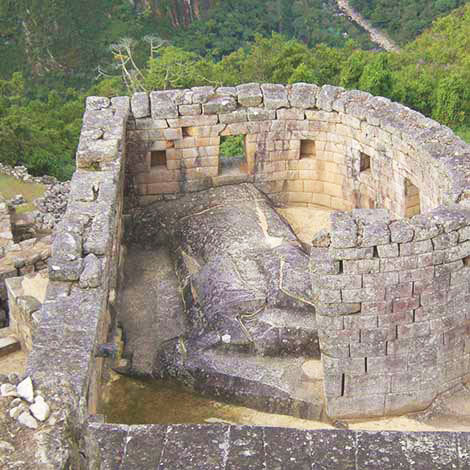
One of the best places to visit is located next to the main fountain. It is the only round building in the archaeological complex. This wonderful, semicircular, and tapering tower of fascinating stonework is best viewed from above. The Temple of the Sun is recognized for having some of the best stonework in the archaeological complex. It is believed that it functioned as a kind of astronomical observatory. The Temple of the Sun provides exceptional views of both, the June solstice sunrise and the constellation of the Pleiades -an important astronomical Andean symbol related to crop fertility- which rises over the nearby peak of Huayna Picchu.
In addition, you can see some niches where it is believed that offerings have been placed.
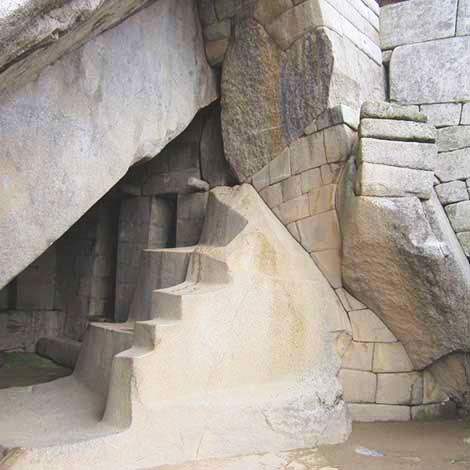
It is also known as the Palace of the Princess. As in the Temple of the Sun, some tall niches were found for the offerings. This natural rock cave is located below the Temple of the Sun. And the base of the building has a structure that resembles that of a cave. It was for these reasons that Hiram Bingham mentioned it as a "grave". And despite being known as the Royal Tomb, no graves or mummies were ever found there. Its purpose was highly debated, probably because it represented access to the spiritual heart of the mountains.
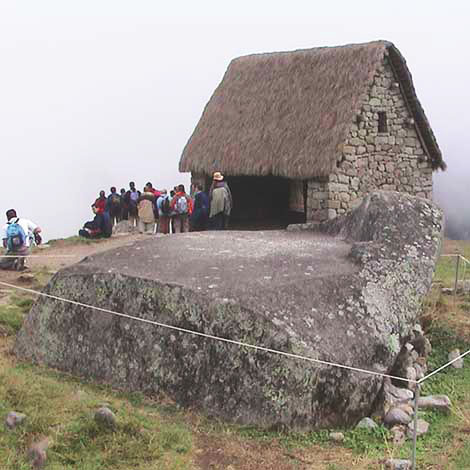
The rock is located just outside the Watchman’s Hut. The different investigations are still not very clear about the main function. Although it is believed that it could be a sacrificial altar. The Funerary Rock is an important symbol of the Inca civilization. Due to its funeral character, the building was intended for the mummification process. It represents, symbolically, the entrance to the cemetery in the Inca citadel. It is also believed that it could also have been used in the mummifications of deceased nobles. In addition, according to some studies, the Funerary Rock also had a close relationship with the study of the cosmos and the stars, especially the sun.
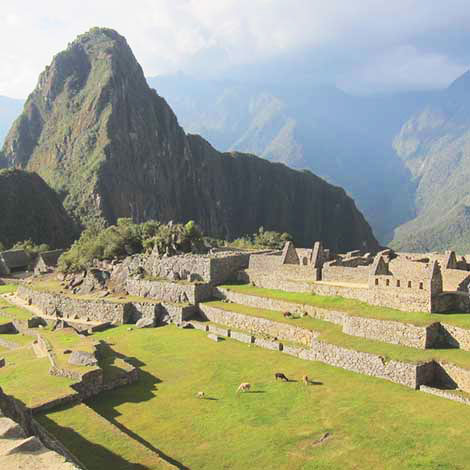
The Sacred Plaza or Central Plaza is the large green area that separates the residential buildings from the functional buildings. It was a political and social center. Due to its excellent location, it was considered the most important architectural ensemble of the Inca citadel. In its surroundings, you can find some of the most important structures. Among them are the Main Temple, the Temple of the Three Windows, Intihuatana, the Temple of the Moon, and the Priest's House. It is the commonplace of the different llamas that graze in the surroundings.
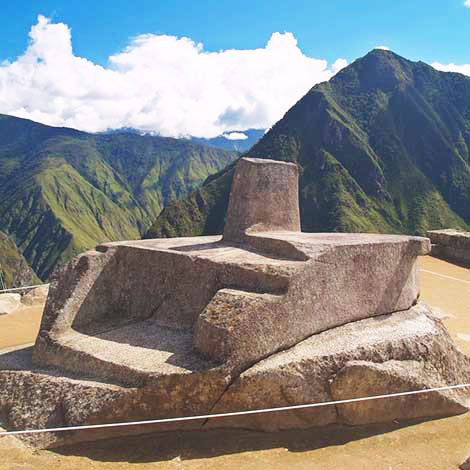
It is one of the most emblematic and iconic places of the archaeological complex. Intihuatana means "Hitching Post of the Sun" and refers to the carved rock pillar at the top of the Intihuatana hill. It has been carved in the shape of the Inca Empire's map. Its exact use remains unclear, but the Inca astronomers were able to predict the solstices using the angles of this rock pillar. Besides, the Intihuatana seems to be aligned with important mountains such as Veronica, Salkantay, Pumasillo, and Huayna Picchu. This structure was not the only one of its kind, but it is one of the only ones in contemporary times. Intihuatanas from other sites were destroyed by the Spanish.
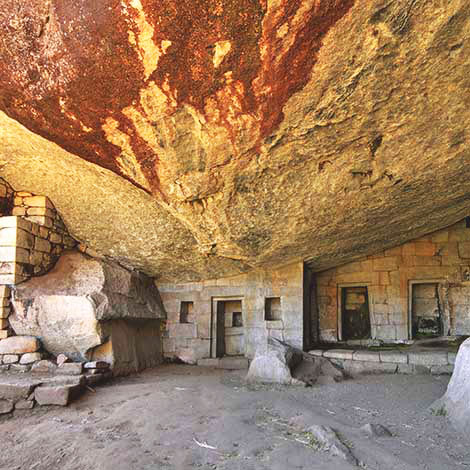
The Temple of the Moon is an Inca ceremonial temple. The site has stone masonry and a shallow cave. In the center of the cave is a throne carved out of the rock. This temple is located inside a natural cave below the top of Huayna Picchu mountain. Its name is due to the fact that it is often lit up by the moonlight. However some archeologists believe the structure was probably dedicated to the spirit of the mountain. The Incas believed the caves could connect them with the world of the dead. The caves are believed to have been used to house mummies.
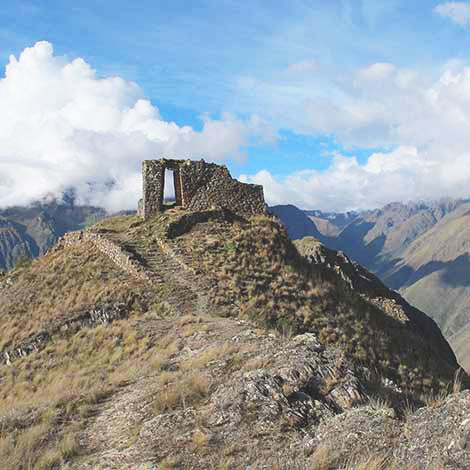
Intipunku or the Sun Gate is one of the most important archeological constructions around the Machu Picchu sanctuary. It was once a fortress of the Inca citadel and, according to history, its steps were a control gate for those who entered and exited the citadel.
Intipunku was designed to workshop the Inti, the Sun god. The rising sun passes through the Sun Gate each year on the summer solstice. Nowadays, it's also the name of the final section of the famous Inca Trail. At the top of Intipunku construction, you will witness an incredible view of the entire site, with the unmistakable shape of Huayna Picchu in the background.
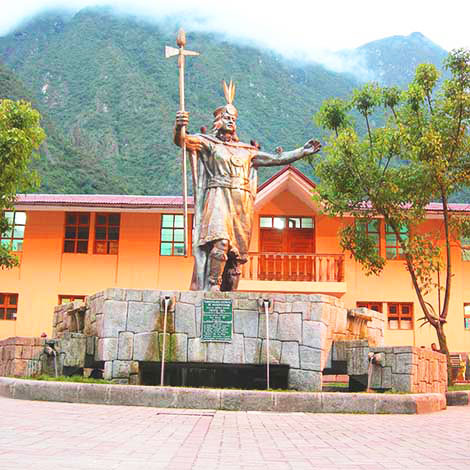
Also known as Machu Picchu Pueblo, this town is the closest access point to the historical Inca citadel, about 6 km away. The name Aguas Calientes translates to Hot Springs, and that is why it bears that name. Despite being a small town, it has a lively and bustling vibe which counts with many hotels and restaurants, as well as natural hot springs. The small town can be an excellent alternative where to stay. It is located much lower than the Sacred Valley and Cusco. What makes it an ideal destination to acclimatize to the height of the Inca citadel.
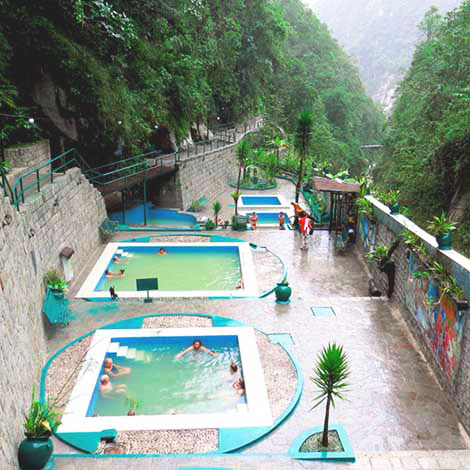 These natural thermal baths give their name to Aguas Calientes. It means hot springs. They are thermo-medicinal waters that surge from the ground at about 40° and are surrounded by a beautiful landscape of the Andes. They are particularly enjoyable after a few days on the Inca Trail or after your tour in Machu Picchu.
These natural thermal baths give their name to Aguas Calientes. It means hot springs. They are thermo-medicinal waters that surge from the ground at about 40° and are surrounded by a beautiful landscape of the Andes. They are particularly enjoyable after a few days on the Inca Trail or after your tour in Machu Picchu.
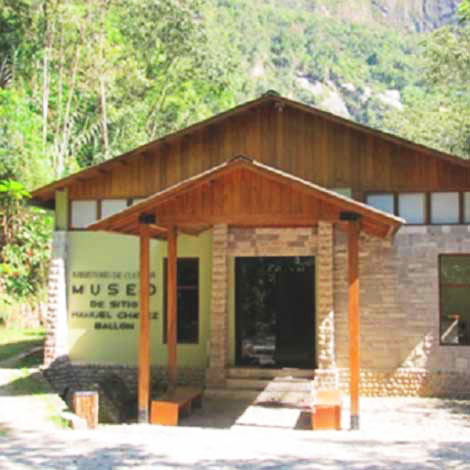
The museum is located in Puente Ruinas, approximately 2 km. from Aguas Calientes, at the foot of Machu Picchu mountain. It's dedicated to the Inca citadel history. It has a series of rooms with interactive displays with lots of interesting facts. You will get an understanding of the importance of these ruins and Inca history.
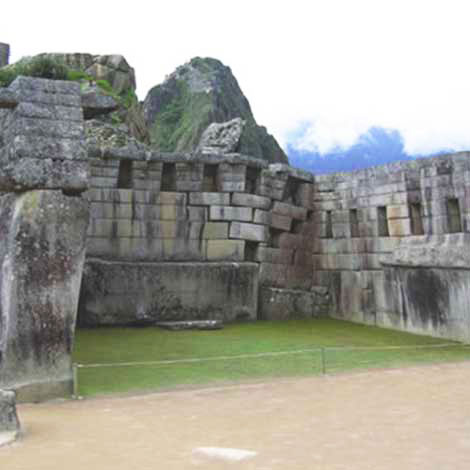
This is another of the most important buildings around the Sacred Plaza. Its name is due to its large size compared to the other structures. Together with the Temple of the Three Windows, they make up the two buildings with the greatest spiritual significance. This temple is an impressive rectangular-shaped building that counts with massive solidity and perfection. It consists of two lateral walls and one rear wall, and a total of seventeen trapezoidal-shaped niches which were used for ceremonial offerings.
During the Inca times, the temple housed royal mummies since the Incas considered them as deities. They worshiped not only them but also their supreme god Wiracocha.
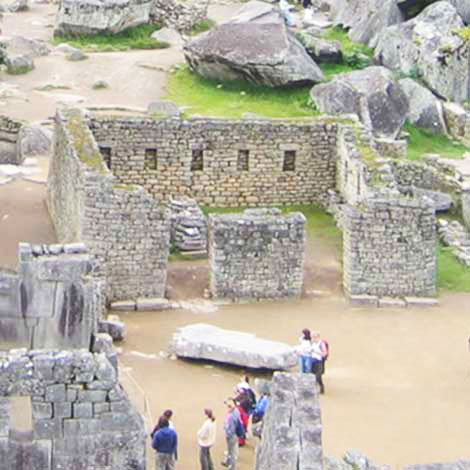
It is another of the important structures around the Sacred Plaza. It is not entirely clear whether a high priest actually lived there. But it is one of the only residences with four walls. Located in front of the Principal Temple, it was built with a lower architectural quality than the temples on its sides. There is little information about these mysterious ruins. One of the many mysteries of the archaeological complex that still have to be solved.
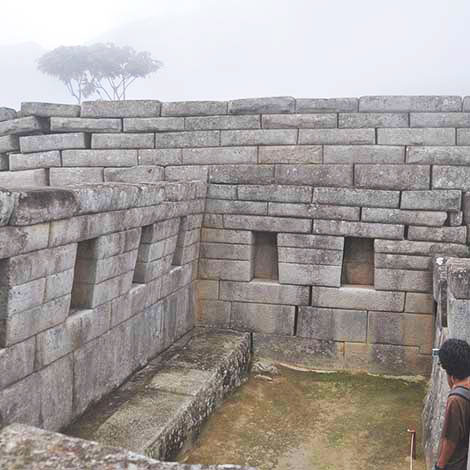
Considered by many to be one of the finest structures in the citadel. It is also often called the "House of Ornaments". This small but famous building is located behind the Principal Temple. It counts with many well-carved niches used for the storage of ceremonial objects. The Sacristy is known for its two rocks flanking its entrance that contain 32 angles each. Inside you will see an unusual low platform at the bottom of the back wall. It seems that it was used as a kind of stone seat or bed.
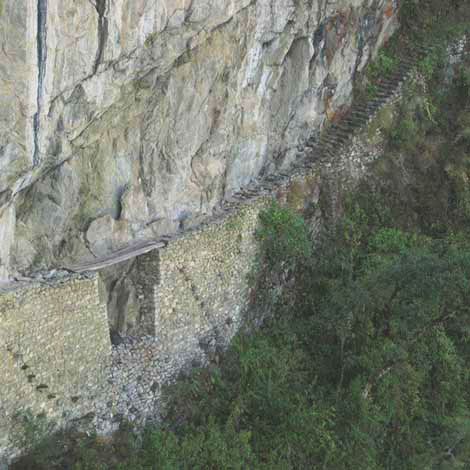
It was built as a secret entrance for the Inca army. The Inca bridge is an original wooden drawbridge that was designed to control access to the Inca citadel. There is an elevated walk that brings you from the Hut of the Caretaker to the Inca drawbridge. But you will only be able to admire the bridge from a nearby viewpoint since, some years ago, someone crossed and tragically fell. Actually, there is no bridge, if not a stone section in the middle of a cliff. Where there should be a bridge there is a drop of about 6 meters. This gap is usually filled in with several tree trunks.
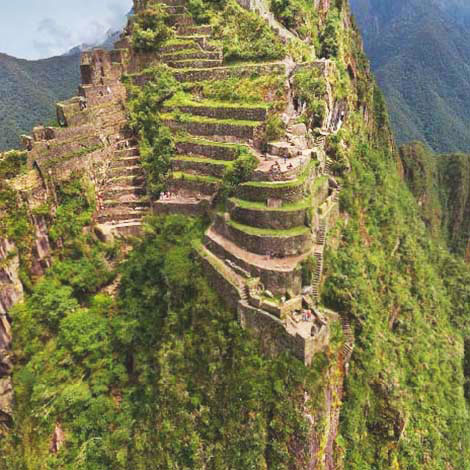
It is one of the most spectacular panoramic views of the Inca citadel. The famous Huayna Picchu or Wuayna Picchu is located behind of the Inca citadel, at a height of 2,720 m. You can get there using a path that departs from the Inca citadel. It is not a hike with great difficulties and it has many advantages to be able to enjoy it. You can enjoy the exclusive Temple of the Moon and much more. At the top of the mountain, you will not only find a small set of Inca constructions but also witness breathtaking and amazing views of the ruins. The tickets have to be booked in advance as access to Huayna Picchu is limited to 400 people per day.
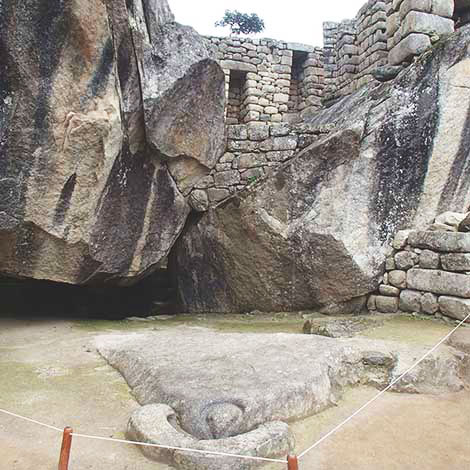
The Temple of the Condor is situated in the urbanized zone of the Inca citadel where you will find a gigantic stone condor carved in fine detail with its wings extended as if it were in full flying. Definitely, one of the most spectacular and impressive examples of what the Incas could do with the stones.
In fact, the condor was a sacred symbol for the Inca civilization, a god that was worshiped since it represented wisdom and the celestial domain. It was called hanan pacha in Quechua.
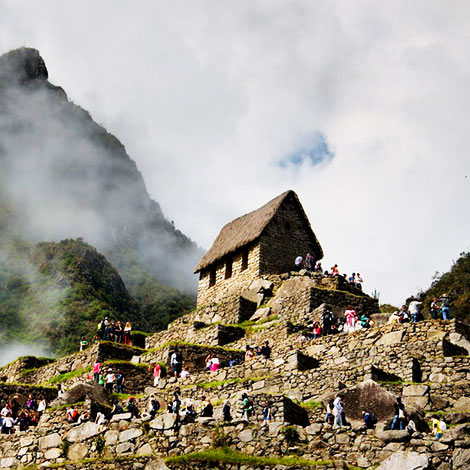
With total security, we can affirm that the Guard House is the most visited point in Machu Picchu. It is due to its strategic location, over the agriculture sector, in the upper zone. With a panoramic view of the citadel, many scholars affirm that this enclosure was inhabited by the guardian of the citadel, who controlled the entry and exit of people to Machu Picchu. The enclosure has three windows that overlook the Inca drawbridge and the final part of the Inca trail, the only two entrances that connect the citadel with the outside world. But you already know, if you are wondering where the best postcards of the archaeological complex are taken, the guardian's house is your answer.
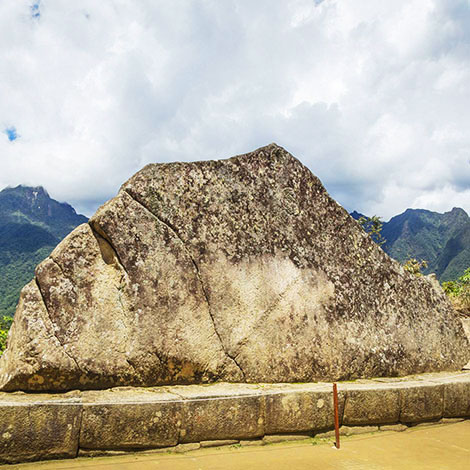
This 3-meter-high monolith with a 7-meter base is located at the north end of the archaeological complex, close to the Huayna Picchu mountain path entrance. This fine-carved rock resembles the shape of the Pumacillo, a mountain located many kilometers from it, but in its same parallel. The rock is between two Huayranas (Inca rectangular roofed enclosures where visitors or participants of an Inca ceremony rested). This is the main reason why it is believed that Sacred Rock was used as an atrium for the worship of the Apus (mountains). Also, its base is finely carved too and could serve as a platform where were deposit offerings to the mountain.
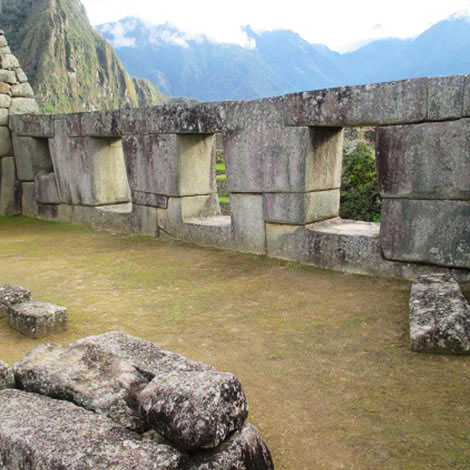
This was an enclosure in the "Hannan" sector or high neighborhood of Machu Picchu, surrounding the Sacred Plaza, where all religious and ceremonial buildings were situated. Today, the enclosure no longer exists but a trapezoidal wall remains that faces the north sector of the citadel. This wall, of perfectly carved stone, contains three trapezoidal windows in the direction to the north. Besides them, there are two covered windows (niches), each one in the west and east extreme of the wall, respectively, where gold and silver offerings were placed. This temple was used for religious ceremonies. Some scholars affirm that the worship activities developed there were destined for the Inca trilogy, Uku Pacha (underworld), Kay Pacha (this world), and Hannan Pacha (the heaven). These could be represented by the three windows.
Aguas Calientes is named after the hot springs in the city that are often overlooked. For most travelers, the main reason to come to Aguas Calientes is to get to the dazzling Inca citadel. That is why it is also usually known as Machu Picchu Pueblo.
Therefore, there are several interesting things to do in Machu Picchu, like swimming in the hot springs or appreciating a great variety of butterflies in "the butterfly house". Also, the local town has two beautiful waterfalls; Mandor and Allcamayo, where you can refresh their waters from the warm and humid weather. In addition, the town counts with hotels, bars, and restaurants. You will find typical Peruvian and Cusco food to spend the night before or after your tour. Keep in mind that Aguas Calientes is not necessarily on the renewing front of Peruvian cuisine. But if you are looking for high-end restaurants, you may want to explore the luxury hotels in town.
Without a doubt, a visit to Machu Picchu will be one of the most fulfilling and exciting trips you will ever embark upon. But it's important to take care of all the details to be able to take advantage of your journey. Before embarking on your vacation, take into consideration these tips:
The archaeological complex is located high up in the Andean mountains and covered with tropical forests. For this reason, it's pretty important to choose the right time for visit Machu Picchu.
There are two seasons in the highlands, the dry and the rainy season. The dry season, from May to September, coincides with the high season. During these months, there are clear skies and no risk of rain or fog, but large crowds. While in the rainy season, from October to April, you will expect highly daily rainfalls but short crowds.
Post note: The Inca Trail is closed in February for maintenance work.
The passport, as the main international ID document to enter and out of any country, will have to be valid 6 months beyond your dates of travel and a visa if is required. For those persons from the United States, a visa to enter Peru is not required. For the rest of the countries, it`s recommendable to find out the entry requirements at the embassies of the different countries existing in Peru.
Before departing from your country to come to Peru, make a copy of your passport, and main traveler documents and guard them in other parts of your original documents (In case these last ones are lost). Another important recommendation is to take photos of these documents and carry them on your cell phone, for any urgent or emergency.
If you come to Peru with any pre-existing disease or treatment, make a detailed list of your medicines. If necessary, supply these in your country of origin before taking the flight to the Andean country. It may be that some of your medications are not in Peru.
Pack a carry-on bag, with a second change of clothes, in addition to your large suitcases for your international flight to Peru. Just in case of loss of luggage in the hold.
As we told in before paragraphs, the archaeological complex has strict regulations regarding the number of visitants per day. This is due to the results of a recent study of load capacity, erosion, and deterioration of the Inca wonder. For this reason, the maximum capacity of visitors per day is around 4000. Consequently, the Machu Picchu entrance tickets for a certain day are sold out 4, even 5 months in advance. In this case, having already your entrance tickets, even before your flights to Peru, or your hotels, or tours will be the best recommendation. Happily, Peru has the best travel agencies in South America who can help you with this item.
There are two train companies in Cusco, Peru Rail, and Inca Rail. Both offer transportation services from Ollantaytambo (a train station located 31 km from Aguas Calientes). Happily, both train companies have the same regulation regarding luggage and backpacks onboard. You can take a duffel bag or carry-on bag of a maximum of 10 kg (22 lb) with dimensions of 62 inches or 158 cm (height + length + width) on board the train. Of course, if you are going to spend not more than 2 days in Aguas Calientes a backpack of 25 liters will be more than enough.
Therefore, preparing an extra backpack, besides your large luggage to come to Peru, will be important.
Tourism means planning. In this sense, learning about the weather, the exchange rate, and processes to reach a certain destination, will be of great importance. For that, there are travel blogs like Machu Travel Peru that contain updated information about travel in Peru. We encourage you to take a look.
We recommend buying your ticket well in advance to find availability. Aside from that, they are highly in demand, the Peruvian government established crowd-control measures. Thus, in order to avoid disappointment -especially during the high season- two or three months in advance would be great. See more information about Huayna Picchu tickets.
In addition, the Machu Picchu entrance ticket is only valid for one day. Thus, take into consideration that there is no possibility of exchange or refund. So it is highly recommended to make your reservations long before you plan to leave for Peru.
Just outside the entrance to the Inca citadel, there is a barely marked station where you can get your stamped passport. If you are looking to fill your passport with the wonderful stamp of Machu Picchu, you cannot miss this opportunity.
You never should underestimate altitude sickness during your visit to the Inca citadel. As we mentioned above, the best way to avoid it and make your trip pleasant and without problems is to spend a couple of days in Cusco without doing any activities that demand a physical effort. Avoid over-fatigue and keep hydrated as much as you can. Your body will be acclimatized to the new height. Also, another way to prevent the symptoms is taking coca tea or chewing coca leaves which will help you to recover your energy.
The best way to avoid the crowds at the Inca citadel is to arrive as early as possible. You can stay in Aguas Calientes for the night and go to the sanctuary really early in the morning. The archaeological complex opens for the first shift of visitors at 6:00 a.m. You will also have the opportunity to watch a dazzling sunrise over the Inca ruins.
Make sure you are well-prepared with the essentials to make your experience unforgettable. Don't forget to bring a sun hat, sunscreen, insect repellent -locals use shampoo as an anti-mosquito method-, comfortable hiking shoes, raincoat, and layers of clothing -Andean weather is kind of unpredictable-. Also, water, snacks, and extra cash.
Both for the mountain of Huayna Picchu and for the mountain of Machu Picchu will require a separate ticket. As with entrance tickets, there are a limited number of tickets. The view of the Inca ruins is usually a highlight for visitors, but the views offered by these routes are fascinating. The Huayna Picchu hike may present some steeper and narrower sections. While the Machu Picchu mountain route is much more relaxed and family-friendly. Keep in mind that doing both walks on the same day is virtually impossible.
Although Machu Picchu and Huayna Picchu require tickets, there are free hiking opportunities inside the Inca citadel such as The Sun Gate and the Inca Bridge. The first one takes around two hours round trip and the second one takes less than an hour round trip. Both are relatively gentle trails where you will witness fantastic and impressive views of the archaeological complex. You will have magnificent possibilities to take a great variety of Machu Picchu pictures.
Just outside the entrance, you can find a wonderful cafeteria and a casual bar with a fascinating terrace. Although we highly recommend having lunch at the Sanctuary Lodge buffet. It can be a bit expensive but it is worth every penny. In case you are traveling on a budget, the town of Aguas Calientes has wonderful restaurant options. Some are cheaper than others.
Life is too short to eat bad food, isn’t it? Check out some of the best restaurants in Aguas Calientes.
Inkaterra Hotel is a hotel chain that is considered the best in Aguas Calientes. This contemporary place is an airy open dining room that overlooks beautiful forest gardens. The menu counts with a variety of dishes, they include traditional Peruvian and international cuisine.
Located in the railroad Km. 110. It’s open daily, from 12 p.m. to 4 p.m. and from 6 p.m. to 10 p.m.
The Tree House is a delightful and welcoming restaurant that counts with peaceful Zen vibes and a laid-back atmosphere. It offers a great variety of dishes dubbed "Peruvian Fusion". A few examples of the exquisite fusion cooking on offer are Camote Ravioli, Cuy Confitado, and Thai chicken soup.
It’s located in Jr. Huanacaure 105 and it’s open daily, from 12 p.m. to 9 p.m.
It offers an original and delicious Franco-Peruvian cuisine in a cozy and welcoming atmosphere.
It’s located in Calle Lloque Yupanqui 103. It’s open daily, from 12 p.m. to 10 p.m.
This cozy restaurant offers a buffet lunch (served from 11:30 a.m. to 3:00 p.m.), oven pizza, grill, a great selection of main courses, desserts, and many more. It’s specialized in Peruvian and international cuisine.
Toto’s House is located in the heart of Aguas Calientes, facing the main shuttle bus stop. From there, you will have nice views of the Vilcabamba River. The dining room decoration is dominated by a grill stove. It’s open daily, from 11 a.m. to 4 p.m. and from 6 p.m. to 10 p.m.
This restaurant has a sophisticated and minimalist atmosphere. It offers a stylized, and avant-garde version of the exquisite flavors of Peruvian cuisine. Vegan options are available as well.
It’s located in Av. Imperio de Los Incas 140. It’s open daily, from 12 p.m. to 10 p.m.
The best dishes of Cusquenean and Peruvian cuisine you will find in this restaurant. The Full House & Peruvian Cuisine is one of the Aguas Calientes restaurants that fastest growing in recent years. Soups, typical dishes, Peruvian snacks, desserts, pizzas, and much more. It is located close to the hotel Casa Andina and the Vilcanota river. Enjoy a great dinner with a spectacular view of the river and the spirit of Machu Picchu seeing you since up.
It’s located in Av. Imperio de Los Incas Nº 620 and it’s open daily, from 11 a.m. to 22 p.m.
Mapacho Craft Beer Restaurant is the best option if you want to spend a relaxed afternoon taking a handicraft beer, chatting for a while, and taste some delicious hamburgers and Peruvian Snacks. The restaurant counts a great variety of handicraft beers, and cold and hot drinks, natural juices, smoothies, burgers, pizzas. Definitely, Mapacho is a great option for those who have tasty good beer and some snacks.
It’s located in Av. Imperio de Los Incas Nº 614 and it’s open from Monday to Friday, from 10 a.m. to 22 p.m. And Saturdays and Sundays from 10 am - 00:00 pm.
Chullos is a local initiative of Uriel Huaman chef. Delicious burgers combined with a handicraft beer (made by themselves). Without mention, its specialties are in Peruvian dishes like Lomo Saltado (Sautéed Loin), Aji de Gallina (chicken chili), or Arroz Chaufa (Chaufa rice). Innovation is not lacking in this restaurant, international recipes made with Peruvian ingredients result in delicious combinations of Novo-Andean food. We invite you to try it.
It’s located in Avenida de Los Incas Nº 612 and it’s open daily, from 08 a.m. to 22 p.m.